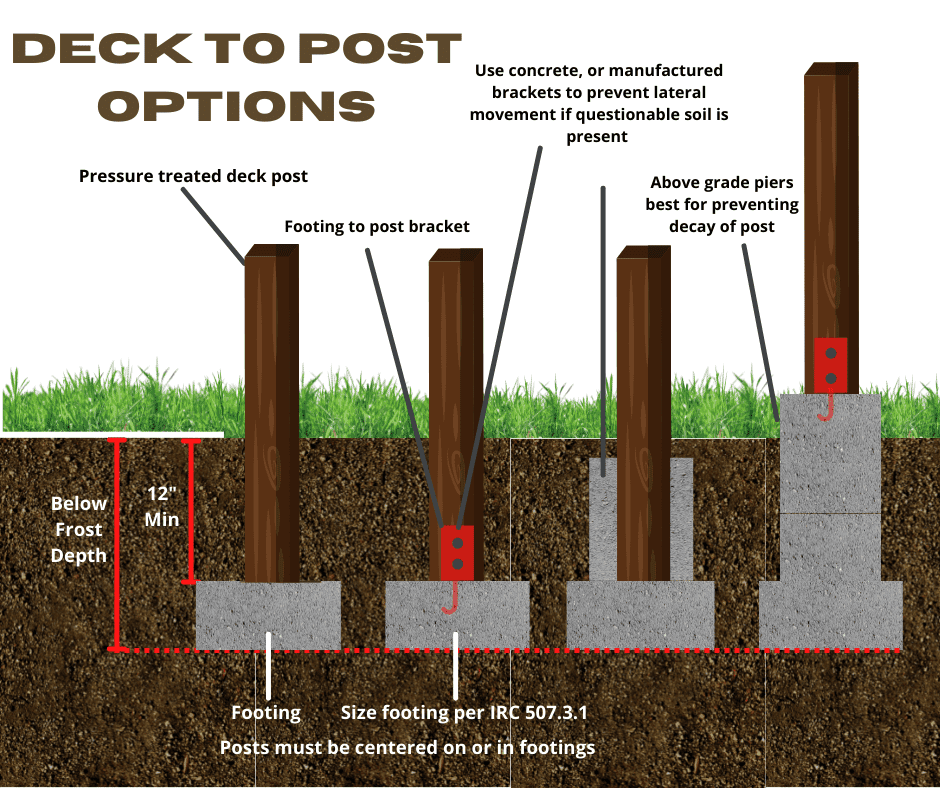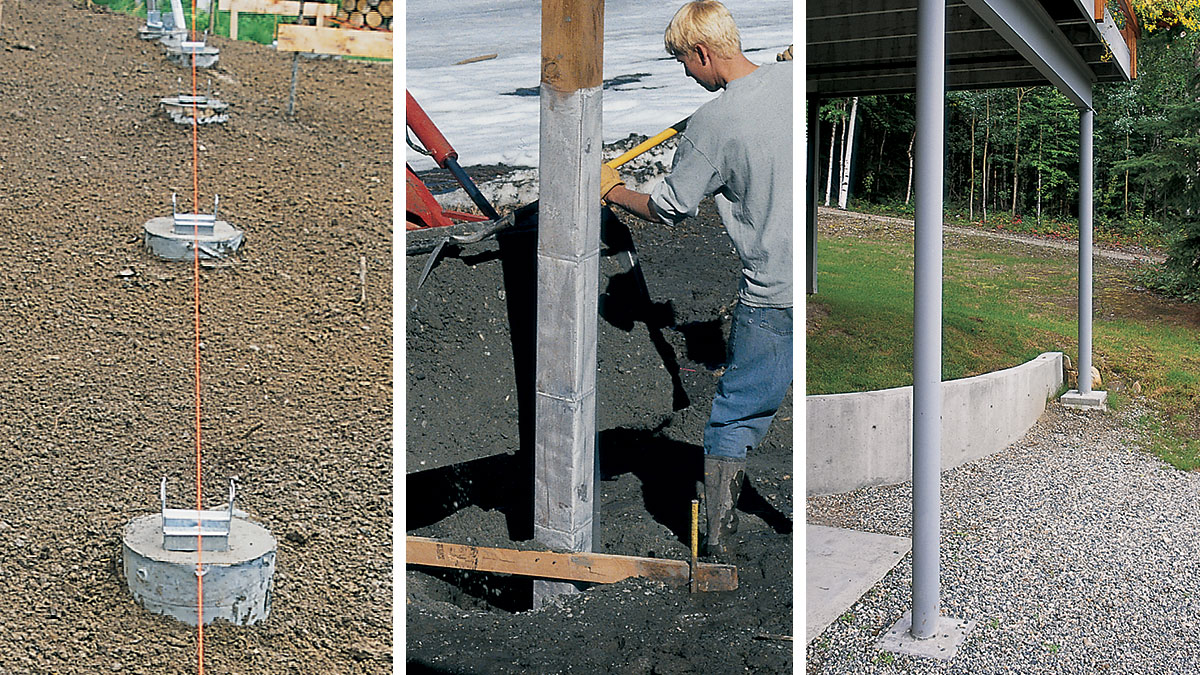From Idea to Concrete: The Critical Role of Deck Footings in Sturdy and Safe Decks
Expert Tips for Putting Up Deck Footings to Support Your Outdoor Space
When it concerns constructing a deck, among one of the most critical components to think about is the installment of correct grounds. These grounds are the foundation upon which your exterior space will certainly relax, offering security and assistance for many years ahead. However what exactly does it take to mount deck footings properly? In this discussion, we will discover skilled ideas and techniques that can help make certain a successful and sturdy deck setup. From choosing the appropriate sort of footings to avoiding typical blunders, we will certainly supply you with the knowledge and understandings you require to with confidence begin on your deck-building trip. Allow's dive right in and discover the key to a resilient and strong exterior area.
Importance of Correct Deck Grounds
Proper deck grounds are necessary for making certain the security and long life of your outside room. When creating a deck, it is vital to take note of the structure on which it will certainly rest. Deck grounds provide the required support for the whole structure and help distribute the weight uniformly - Deck Footings. Without strong and properly installed grounds, your deck may come to be unpredictable, resulting in safety threats and costly repairs.

Along with stability, proper deck footings also add to the durability of your outdoor area (Deck Footings). Grounds that are designed and created to hold up against the components and soil conditions in your location will help protect against the deck from working out or changing gradually. By making sure the footings are correctly sized and installed, you can lessen the risk of damages to the deck structure, extending its life expectancy and minimizing the need for costly repairs or substitutes

Choosing the Right Kind of Footings
When selecting the suitable kind of footings for your deck, it is necessary to think about elements such as soil conditions, regional building regulations, and the general style of your outdoor area. The sort of footing you choose will play a critical duty in making sure the security and long life of your deck.
One usual kind of footing is the concrete ground. Concrete footings are appropriate for a lot of soil problems and offer superb support for decks.
In some situations, you might require to use specific grounds, such as stack footings or deep structures, if you are developing a multi-level or huge deck. These grounds are created to distribute the weight of the deck over a larger area, guaranteeing stability and preventing settling or sinking.
Prior to picking a sort of ground, it is necessary to seek advice from regional building regulations and policies to ensure compliance. Additionally, think about the layout and meant use your exterior room. Elements such as the dimension, form, and load-bearing needs of your deck will certainly affect the sort of footing that is most appropriate.
Preparing the Ground for Footing Setup
To appropriately prepare the ground for footing installation, it is essential to examine the soil problems and take needed steps to ensure stability and toughness of the deck. The primary step is to excavate the location where the footings will be set up. The depth of the excavation will certainly depend upon the frost line in your region and the specific needs of the deck style. It is vital to eliminate any kind of plants, rocks, or particles from the excavation to make sure a solid structure.
As soon as the location has been dug deep into, the next action is to compact the soil. This can be done making use of a plate compactor or by utilizing a hand meddle. Compacting the dirt aids to eliminate any type of gaps or air pockets, which can lead to settling and instability in time.
After condensing the check out here soil, it is vital to lay a layer of gravel or crushed rock at the base of the excavation. This will supply drainage and assistance to prevent water from pooling around the grounds, which can cause erosion and instability.
Step-by-Step Overview to Installing Deck Footings
After appropriately preparing the ground for footing installment, the next step is to start the process of setting up deck grounds. This detailed overview will certainly supply you with a clear understanding of how to install deck footings for your outside area.
Determine the location: Beginning by noting the placements of the deck grounds making use of stakes and string. Ensure that the locations align with the style and design of your deck.
Dig the openings: Make use of a message hole digger or an auger to dig the holes for the footings. The deepness and size of the openings should be in conformity with local building regulations and the particular requirements of your deck design.
Level the holes: Utilize a level to guarantee that the holes are dug to the appropriate deepness and are level with each other. (Deck Footings)
Add crushed rock: Area a layer of gravel at the bottom of each hole to improve water drainage and prevent the wood from rotting.
Put the grounds: Put the footings into the holes, ensuring they are degree and plumb. Utilize a level and a measuring tape to ensure precision.
Protect the footings: Pour concrete into the holes around the footings, filling them to the top. Make use of an article level to make sure the footings remain degree as the concrete sets.
Enable time for curing: Allow the concrete remedy according to the producer's guidelines prior to proceeding with the deck construction.
Usual Errors to Avoid Throughout Footing Setup
One important facet to think about during the installation of deck footings is avoiding usual errors that can endanger the stability and longevity of your outside space. While deck grounds may look like a easy and straightforward component of the construction process, forgeting particular elements can bring about costly fixings and potential safety threats down the line.

Additionally, overlooking to set up correct water drainage steps can trigger water to accumulate around the grounds, causing rot, degeneration, and the eventual weakening of the deck's structure. In addition, utilizing the incorrect kind of footing product or stopping working to properly protect the footings can compromise their structural stability.
To prevent these mistakes, it is necessary to consult with a specialist or adhere to market standards to ensure correct footing setup. check that By doing so, additional reading you can make certain the stability and durability of your exterior area, giving a satisfying and risk-free environment for years to come.
Conclusion
Finally, mounting proper deck footings is critical for the stability and durability of your outside space. By picking the right kind of grounds and sufficiently preparing the ground, you can make certain a solid foundation for your deck. Complying with a step-by-step overview and preventing common mistakes during footing installation will better boost the durability and safety of your deck.
Proper deck grounds are important for guaranteeing the stability and long life of your exterior room. The footings offer as a connection between the ground and the deck, allowing the weight of the deck and its residents to be dispersed evenly right into the dirt.One typical type of footing is the concrete footing. Insert the grounds: Put the grounds right into the holes, making sure they are level and plumb. Protect the grounds: Pour concrete right into the openings around the footings, loading them to the top.